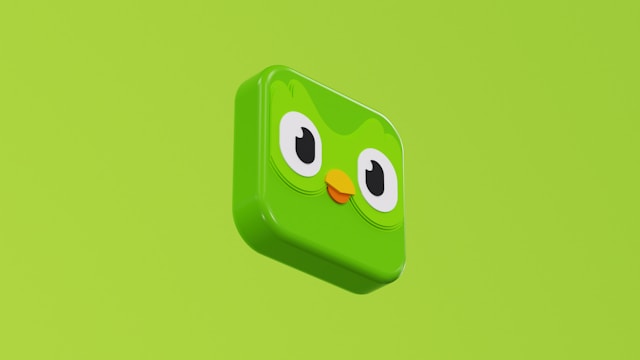From Mass Advertising to Personalized Experiences
The field of marketing has undergone a dramatic transformation over the past century, evolving from broad, one-size-fits-all approaches to highly targeted, behavior-driven strategies. This evolution has been largely shaped by advancements in behavioral science, psychology, and technology. Let’s explore this fascinating journey.
Historical Development
Early 1900s: The Dawn of Modern Advertising
- 1903: Walter Dill Scott publishes “The Theory of Advertising,” one of the first books to apply psychology to advertising.
- 1920s: John B. Watson, the father of behaviorism, begins applying psychological principles to advertising, emphasizing the importance of repetition and emotional appeals.
1930s-1940s: The Rise of Motivational Research
- Ernest Dichter introduces psychoanalytic concepts to understand consumer behavior.
- Researchers begin to explore the subconscious motivations behind consumer choices.
1950s-1960s: The Cognitive Revolution
- Marketers start viewing consumers as information processors rather than just responders to stimuli.
- The concept of brand image gains prominence, recognizing the psychological associations consumers form with brands.
1970s-1980s: The Birth of Consumer Behavior as a Distinct Field
- Development of models like the Theory of Reasoned Action by Fishbein and Ajzen (1975), providing frameworks for understanding consumer decision-making.
- Marketing strategies begin to focus more on consumer needs and preferences.
1990s-2000s: The Digital Revolution
- The internet and big data analytics enable more precise targeting and personalization.
- Online behavior becomes a crucial source of consumer insights.
2010s-Present: The Age of Behavioral Economics and Neuroscience
- Insights from behavioral economics are increasingly applied to marketing strategies.
- Neuroscience techniques like fMRI are used to study consumer responses to marketing stimuli.
Key Milestones and Figures
1923: Claude Hopkins publishes “Scientific Advertising,” emphasizing the importance of testing and measuring in marketing.
1957: Vance Packard’s “The Hidden Persuaders” brings public attention to motivational research in marketing.
1960: Jerome McCarthy introduces the 4 Ps of Marketing (Product, Price, Place, Promotion).
1967: Philip Kotler publishes “Marketing Management,” bridging marketing theory and practice.
1979: Amos Tversky and Daniel Kahneman publish their work on prospect theory, revolutionizing our understanding of decision-making under uncertainty.
1993: Don Peppers and Martha Rogers introduce the concept of one-to-one marketing in “The One to One Future.”
2008: Richard Thaler and Cass Sunstein publish “Nudge,” popularizing the concept of choice architecture in decision-making.
2011: Daniel Kahneman publishes “Thinking, Fast and Slow,” synthesizing decades of research on cognitive biases and their implications for decision-making.
Modern Practices
Today’s marketing strategies are deeply rooted in behavioral science insights:
- Personalization: Using data analytics and machine learning to tailor marketing messages to individual preferences and behaviors.
- Nudge Marketing: Applying behavioral economics principles to gently guide consumer choices without restricting options.
- Neuromarketing: Using neuroscience techniques like EEG and eye-tracking to understand consumer responses to marketing stimuli.
- Emotional Branding: Creating strong emotional connections between consumers and brands, recognizing the role of emotions in decision-making.
- Social Proof: Leveraging the power of social influence in marketing strategies, based on the psychological tendency to follow others’ actions.
- Choice Architecture: Designing how choices are presented to influence decision-making, based on insights from behavioral economics.
- Behavioral Segmentation: Grouping consumers based on their behaviors and decision-making patterns rather than just demographics.
- A/B Testing and Optimization: Continuously experimenting with different marketing approaches to optimize effectiveness, based on the scientific method.
- Predictive Analytics: Using big data and machine learning to predict consumer behavior and preferences.
- Gamification: Applying game-design elements to marketing to increase engagement and motivation.
- Conversational Marketing: Using chatbots and AI to create personalized, real-time interactions with consumers.
- Moment Marketing: Delivering marketing messages at precisely the right moment based on consumer behavior and context.
Netflix: Personalization at Scale
Netflix uses sophisticated algorithms to analyze viewing habits and preferences, offering personalized recommendations that keep users engaged. This approach has significantly contributed to their customer retention and growth.

Duolingo: Gamification and Nudge Marketing
Duolingo uses gamification elements like streaks, levels, and rewards to keep users engaged in language learning. They also employ nudge marketing through push notifications and emails to remind users to maintain their learning habits.

Future Trends
The field of behavioral marketing continues to evolve with advancements in technology and research. Emerging trends include:
Artificial Intelligence (AI): AI and machine learning are being used to predict consumer behavior and personalize marketing strategies in real-time.
Augmented Reality (AR) and Virtual Reality (VR): These technologies offer immersive experiences that can influence consumer behavior in novel ways.
Sustainability and Ethical Marketing: There is a growing emphasis on ethical marketing practices and sustainability, driven by consumer demand for transparency and corporate responsibility.
Conclusion
The evolution of behavioral science in marketing has transformed the field from a one-size-fits-all approach to a nuanced, data-driven discipline that considers the complexities of human behavior.
As technology continues to advance and our understanding of human psychology deepens, we can expect even more sophisticated applications of behavioral insights in marketing strategies.
However, with great power comes great responsibility. As marketers gain more tools to influence consumer behavior, ethical considerations become increasingly important.
The future of behavioral science in marketing will likely involve striking a balance between effectiveness and ethical practices, ensuring that marketing strategies respect consumer autonomy and privacy, while delivering value to both businesses and customers.
This includes being transparent about data collection practices, obtaining explicit consent, and ensuring data security.
Ready to Transform Your Marketing Approach?
Dive deeper into the evolution of behavioral science in marketing and apply these insights to revolutionize your marketing strategies. Contact us today to learn how our expertise can help you leverage behavioral science to create more effective, ethical, and personalized marketing campaigns.
